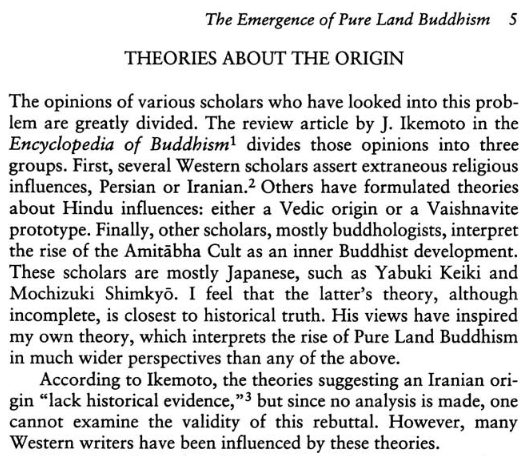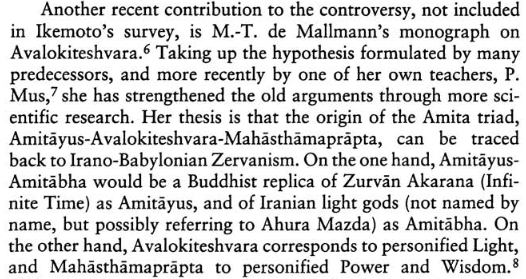I've been reading some interesting stuff about the origins of the story of Amitabha Buddha, the Sutras for which seem to date within the range of perhaps 150 - 400 CE.
The story moved from India to China, and later to Japan, with the religious doctrine morphing along the way. This is something I hadn't known before:
Karl Barth, one of the great theologians of the twentieth century, does a wonderful comparison in Church Dogmatics between Reformed Christianity and Pure Land Buddhism as taught by Honen and Shinran.
He surveyed the religious traditions of the world in search of doctrinal parallels to Christianity and concluded that it was the Japanese Pure Land tradition that provided “the most exact, comprehensive, and plausible ‘pagan’ parallel to Christianity” (Barth 1961, 1,2: 342). He expresses some shock at the depth and specificity of resemblance, commenting that the Pure Land thought of Hōnen and Shinran, in particular, “parallels not so much Roman or Greek Catholicism but rather, of all things, the Christianity of the Reformation, and therefore confronts Christianity with the question of its truth precisely in its form as a consistent religion of grace” (2).
Update: Google has turned up an extract of a book with a chapter about the rise of Pure Land Buddhism, but I can't even see who the author is. Nevertheless, this section about the various arguments for how it arose is of interest:
I have to say, it is interesting to note that a major evolution within Buddhism was going on at the same time as the various strains of Christian belief were also in competition. And both end up with a (kind of) Trinity, as well.
I mentioned once before that it is in fact quite likely that Indian Buddhists had travelled to the Middle East region before and around the time of Christ.
As for Christians heading East, I don't believe I have noted this before:
In A.D. 781, a Christian monk named Jingjing composed an inscription of roughly 1,800 Chinese characters on a large stone tablet, called a stela, which would become one of the richest sources of information ever discovered about early Christianity in China.
According to the stela, unearthed in the early 1600s, Christianity came to China in A.D. 635, when a Nestorian monk named Aluoben entered the ancient capital of Chang’an -- now modern-day Xi’an -- in central China. His arrival must have been the source of some excitement because the e mperor sent his minister of state to greet the guest and bring him to the palace. Although we do not know where Aluoben came from or why he visited China, some scholars believe that he arrived from Persia and was part of an important foreign delegation. Whatever the case, the Tang emperor issued an imperial edict three years later allowing Aluoben to build a monastery in Chang’an and to settle there with a handful of missionaries.
By the time Aluoben’s story was commemorated in stone almost 150 years later, the Old and New Testaments had been translated into Chinese, and monasteries had been founded in several cities throughout China. But in 845, an imperial edict limited all foreign religion, including Christianity. The edict triggered a period of persecution, and, by the end of the Tang Dynasty in 907, Christianity had all but disappeared from China.
A significant presence did not reappear until the 13th century, when Mongols conquered China and founded the Yuan Dynasty.
It would be neat to find some Christian influence on the development of Mahayana Buddhism in Indian in the second century, but seems like no one has found evidence of such visitors...



The OT has pagan sources for inspiration:
ReplyDeletehttps://www.youtube.com/watch?v=JuaSVR_wa-w
Thanks John, I will look at that video...
ReplyDelete